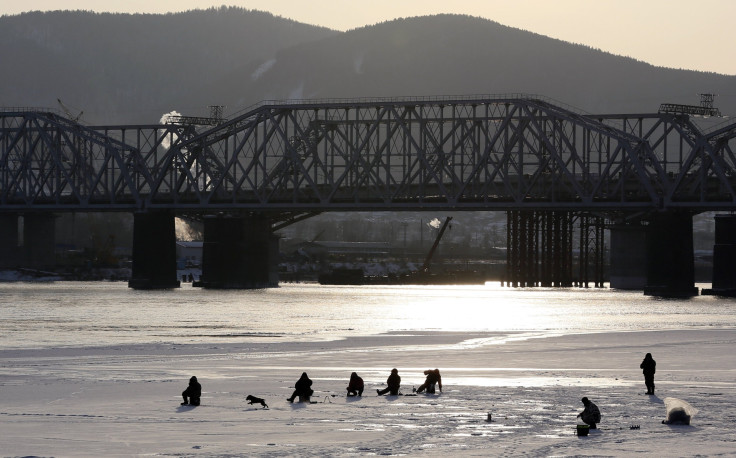Putin Considering Russian High-Speed Train That Would End At Bering Strait, Doorstep Of Alaska and US

A plan to build a high-speed railway across much of Siberia to the Bering Strait, the body of water between Russia and Alaska, has been submitted to Russian President Vladimir Putin, the president of Russia's Academy of Sciences announced Monday. The Bering Strait is just 55 miles wide at its narrowest point, meaning that if such a high-speed train line were to be built in Russia, its last stop could be a short distance from U.S. soil.
In an interview published Monday with the Russian government daily Rossiiskaya Gazeta, Vladimir Fortov, the head of the Academy of Sciences, said the proposal came from ideas sought by the Russian government to help advance economic development in the far east. He called the project "very large-scale and expensive," the Moscow Times reported, but did not offer estimates regarding costs or funding.
The far east of Russia is a region rich in resources such as "metals, minerals and timber," The Economist has reported, while scholars describe the area as having been abandoned and underdeveloped, despite its trove of natural resources, under the Soviet Union and after its collapse. Only recently has Russia begun to focus on the region in an attempt to capitalize on these resources.
Russia already has the famous Trans-Siberian Railway, which stretches nearly 6,000 miles from Moscow in the west to the port town of Nakhodka far in the east. Construction on the railway began in 1891, and in its eastern half, routes branch off through Mongolia and northern China that allow passengers to connect to Beijing, while the railway in the west connects to European train lines via Moscow and St. Petersburg. The Moscow Times reported that Russia's state-owned railway company has struggled to raise capital to expand a high-speed rail network following the same route as the current Trans-Siberian Railway.
A separate route known as the Baikal-Amur Mainline, constructed during the Soviet era, parallels the eastern section of the Trans-Siberian line, but still does not reach the extreme northeastern areas of Russia as the proposed high-speed line would.
© Copyright IBTimes 2024. All rights reserved.






















